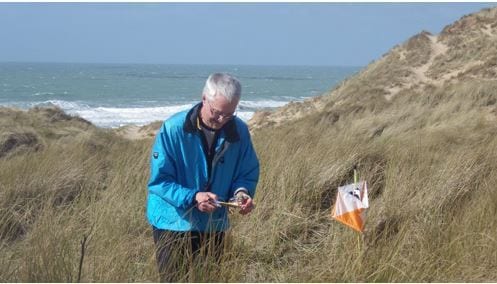How to be a Controller
A Quantock Orienteers one page guide
There are three officials involved in any orienteering event: Planner, Controller and Organiser.
The Controller checks all the work done by the Planner.
The Controller should be experienced at planning, and be able to give guidance and advice to the Planner.
British Orienteering approved training courses in how to be a Controller are frequently available, leading to a qualification. For some events it may be necessary to have this qualification.
The Controllers job is to make sure the event is:
Fair
Before going to the forest, get the latest course planning requirements and check that all courses meet the requirements.
Visit all the control sites well in advance of the day and check the sites have been tagged.
Check the map is up to date. Forest operations can change things dramatically, so if an area of the map is not up to date, either get it updated or avoid using that area.
Check the course maps and descriptions are correct, preferably before final printing otherwise you will end up manually changing each copy!
On the day, make sure the right controls are in the right place. It is worth taking a dibber with you and punching all the controls to make sure they are all working.
If anything is wrong, make sure it gets sorted. If necessary delay the start, or delete a control from a course. Tell the Organiser when courses are ready.
Safe
Before starting, read the latest British Orienteering rules on safety here (British Orienteering rules Appendix E). Also read QO safety policies.
Although there are hazards in the forest such as steep slopes, serious injuries are rare. There is therefore no need to be risk averse, but if hazards can be avoided without degrading the courses then do so.
Road crossings are by far the greatest orienteering hazard (see Appendix E section 4.9). Can courses, especially junior courses, avoid road crossings and car parking areas? Road crossings should not be used on white and yellow courses. If unavoidable, marshalled crossings may be acceptable on orange and light green, but under 16s must not be allowed to run courses with un-marshalled public road crossings. Where a road crossing is essential, is the crossing in a relatively safe place? Is an extra control needed to force competitors to a safe place to cross?
Is a marshal needed to act as a look-out?
It is also a great safety advantage if the start and finish can be close to registration and parking, so that if there is an incident all the key people will be close by.
The Organiser will prepare a risk assessment which the Controller should check. According to the rules the risk assessment must be signed by a qualified person (Appendix E rule 2.1.2)
If you are concerned about anything, discuss with the other officials or a committee member.
Note, you have the authority to cancel the event, for example due to very severe weather.
Fun
Do the courses make the best use of the area? Is there variety and interest in the courses?
Avoid long lengths of easy running, steep climbs for no good reason, or forcing participants through areas of fight.
Where possible avoid long walks from the car park to the start or finish.
Are participants, some of whom may travel a long distance, going to feel that they have had a good day out?
Further information
- British Orienteering's overview
- Overview of Controller responsibilities (SCOA)
- Controllers checklist (SCOA)
- Controllers guide (from New Zealand)
- Planning Handbook by Hilary Quick
- The Rules of Orienteering, in particular the sections on Safety (section 14 and Appendix E) and Planning (Appendix B).
